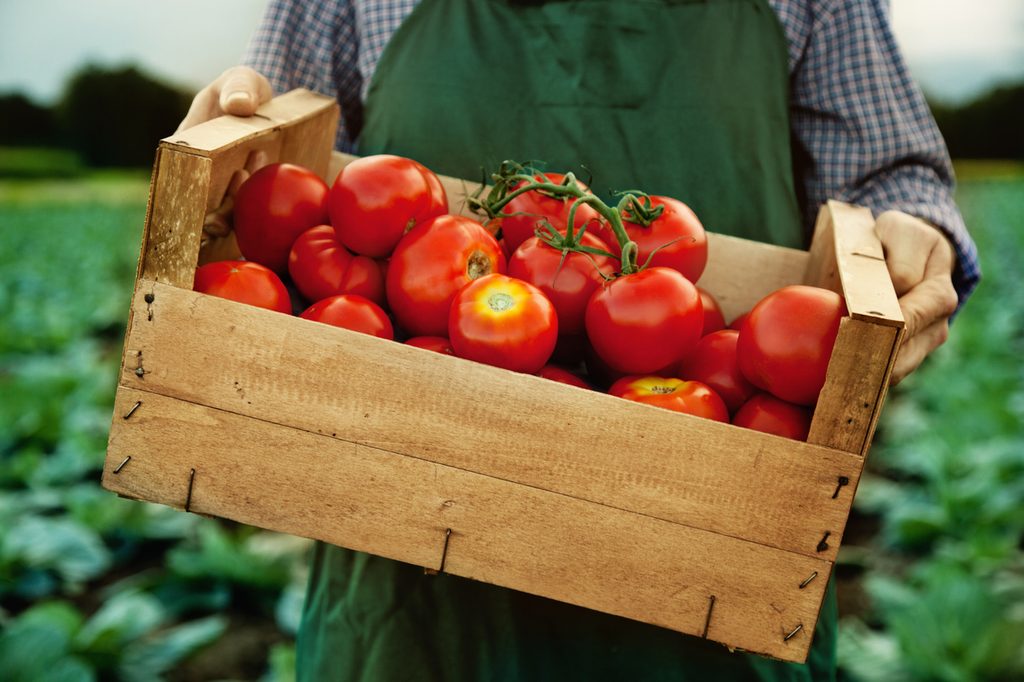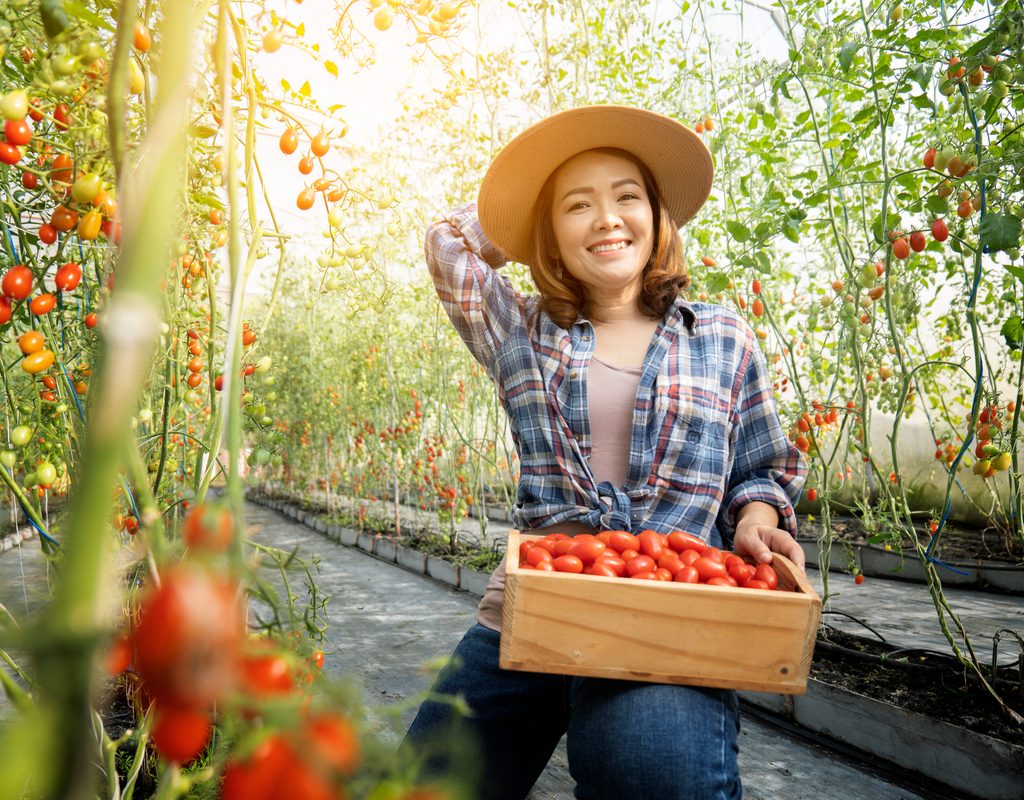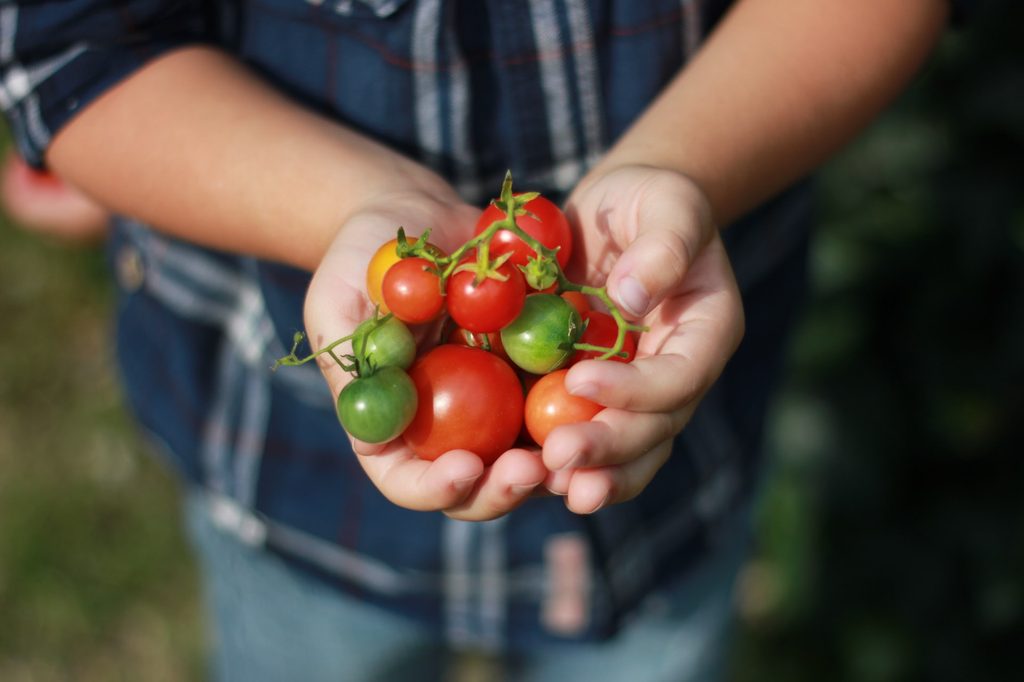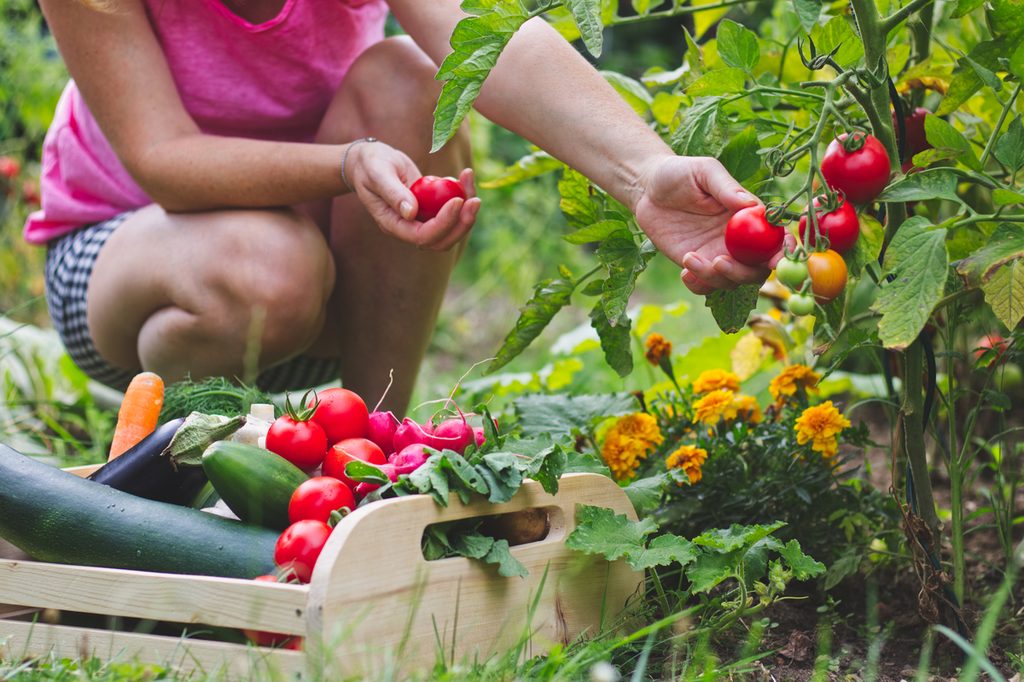
Garden-fresh tomatoes are juicy and delicious, plus they’re packed with important vitamins. There is some conflicting information when it comes to the best time to harvest tomatoes, though. Since you can harvest tomatoes before they’re ripe, deciding the best time to harvest your tomatoes may seem tricky or overwhelming. This guide will help clear things up! Here’s everything you need to know about when to pick tomatoes.
When to pick tomatoes

Tomato harvest season is typically two to three months after planting a seedling, or a little longer if you’re growing from seeds. This is often in late summer or early fall, but of course, this varies based on your planting time. If you want to eat green or unripe tomatoes, you can harvest them at any time. Green tomatoes are considered safe to eat, although the acidity can give some people stomach aches.
If you prefer ripe tomatoes, wait until the tomato is at least one-half to two-thirds the ripe color of the variety you’re growing and only one-half to one-third green. Morning is the best time of day to pick tomatoes. Few people enjoy being in the garden during the hottest part of the day, and tomatoes are the same way!
Should you pick tomatoes before they turn red?

Just because you can pick tomatoes before they’re ripe, does that mean you should? Well, it depends. Some gardeners claim that tomatoes picked when they’re fully ripe have a better texture and taste than those that ripened after being picked, but this seems to be a matter of personal preference. The best way to decide is to try it for yourself. Pick a few tomatoes at different stages of ripening and see which you prefer.
There are a few added benefits to picking tomatoes before they’re fully ripe. It’s easier to protect them from pests and diseases. Tomatoes that haven’t finished ripening are also easier to store, and you can store them for longer without spoiling. Fully ripe tomatoes need to be stored more carefully, must be used more quickly, and the longer a tomato is outdoors, the greater the risk of becoming a snack for pests.
Can you encourage tomatoes to ripen faster?

You can speed up the ripening process both on and off the vine, but the techniques are different. To encourage already-picked tomatoes to ripen faster, place them in a closed container, such as a bag or box with a ripe banana or apple. Ripe fruits give off ethylene gas, which causes other nearby fruits to ripen faster. This also works in reverse — if you want to slow your tomato’s ripening, avoid placing it near other ripe fruit.
Getting tomatoes to ripen on the plant faster is stressful — not for you — for the tomato plant. Stressing the plant slightly will cause it to put more energy into forming the tomatoes, making them ripen faster. If you’re growing tomatoes as perennials, you should go easy on this technique to avoid overstressing the plant. However, most tomatoes in the U.S. are grown as annuals, so there’s no need to worry. Decreasing the amount of water your tomato plant gets and removing some leaves will stress the plant enough to encourage quicker ripening.
Tomatoes are delicious, and now you know when to pick them for the freshest and best harvest. Some factors come down to personal preference, so you should feel free to experiment and adjust as needed. Whether you choose to let your tomatoes ripen on the vine or in your kitchen, or even not at all, enjoy your tasty tomato harvest!


